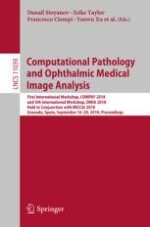2018 | OriginalPaper | Chapter
Uncertainty Driven Pooling Network for Microvessel Segmentation in Routine Histology Images
Authors : M. M. Fraz, M. Shaban, S. Graham, S. A. Khurram, N. M. Rajpoot
Published in: Computational Pathology and Ophthalmic Medical Image Analysis
Publisher: Springer International Publishing
Activate our intelligent search to find suitable subject content or patents.
Select sections of text to find matching patents with Artificial Intelligence. powered by
Select sections of text to find additional relevant content using AI-assisted search. powered by
